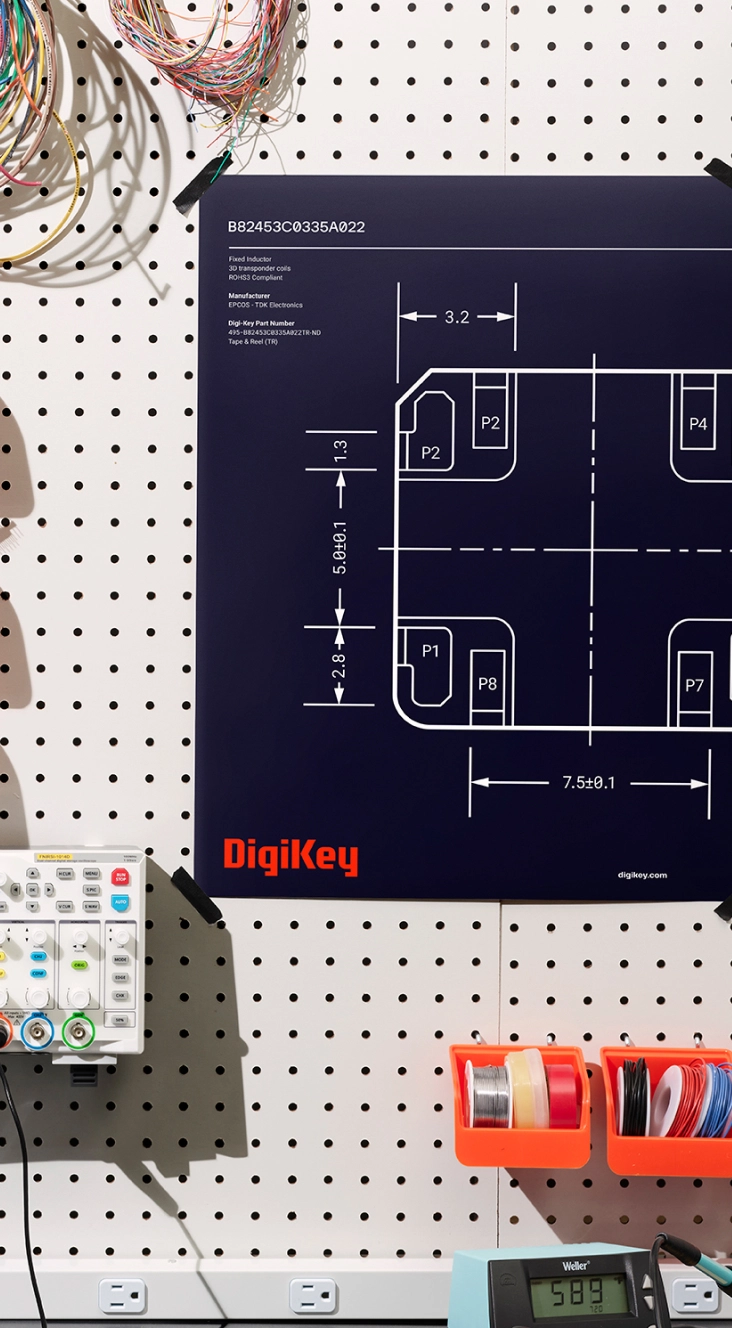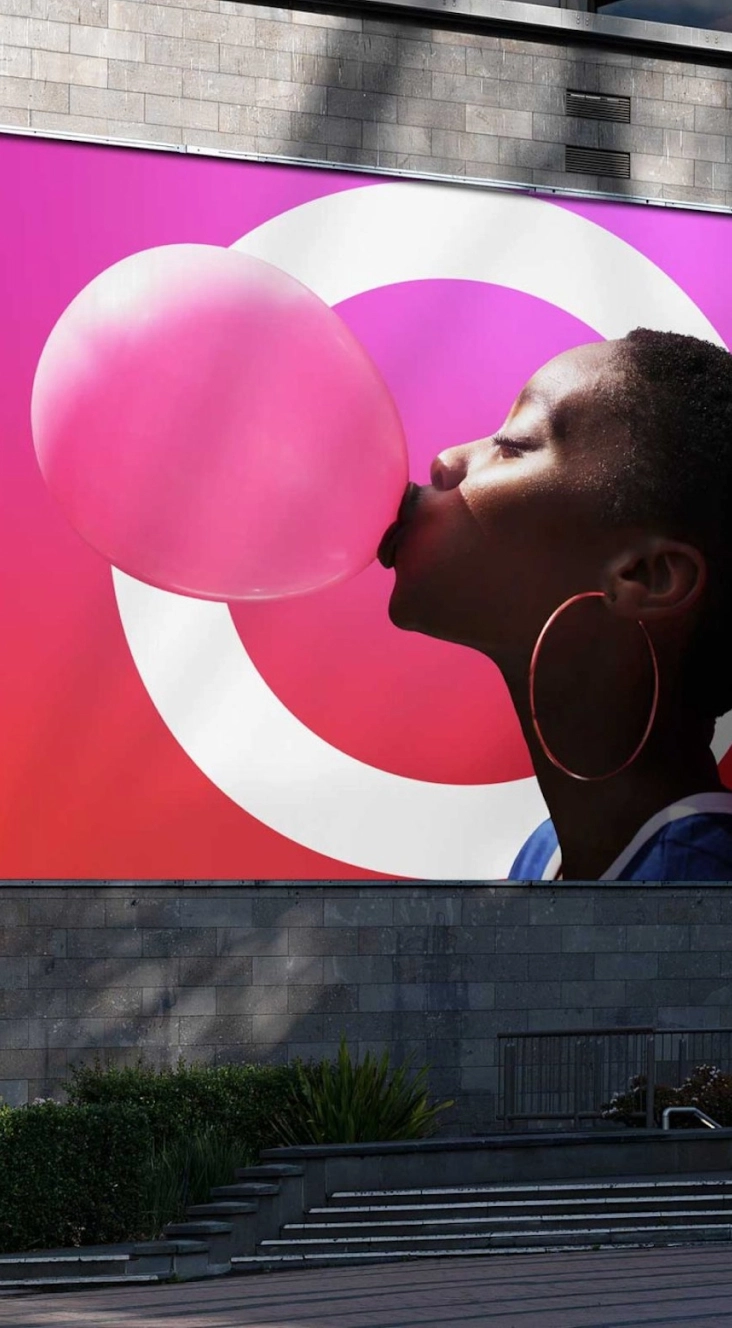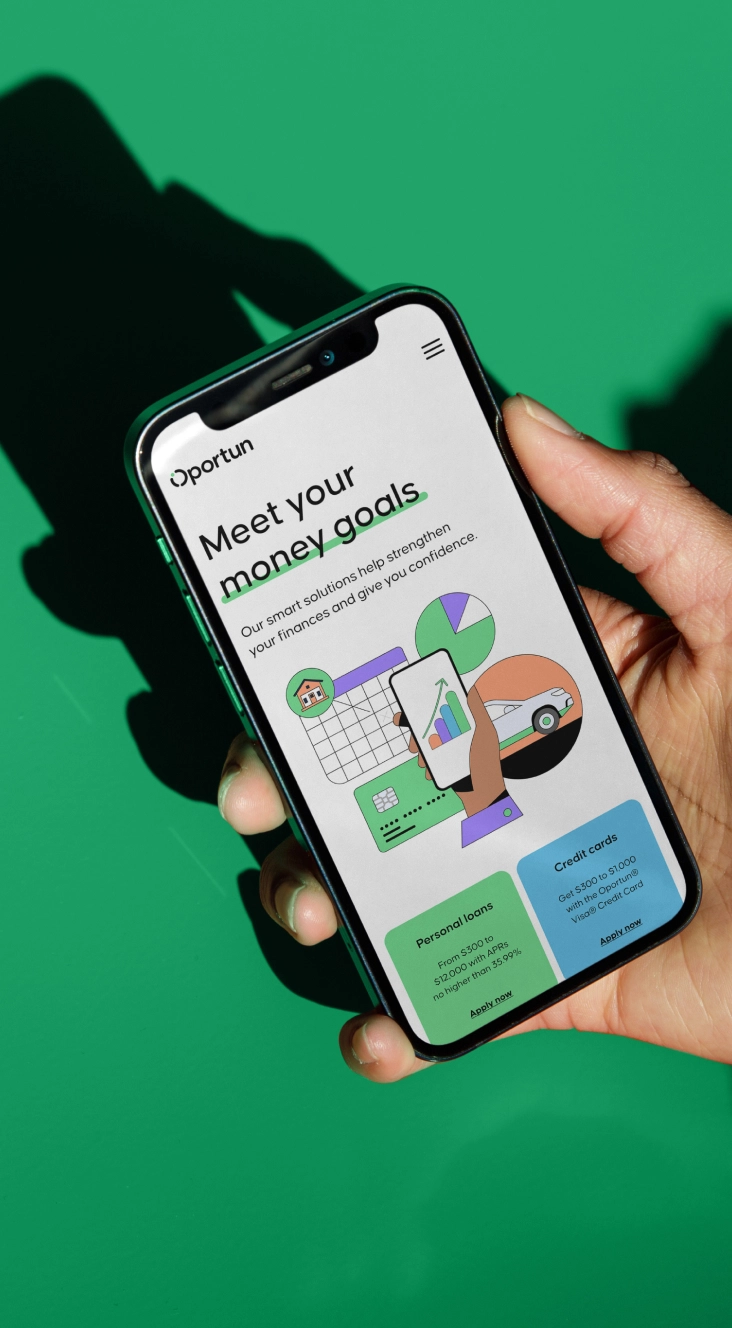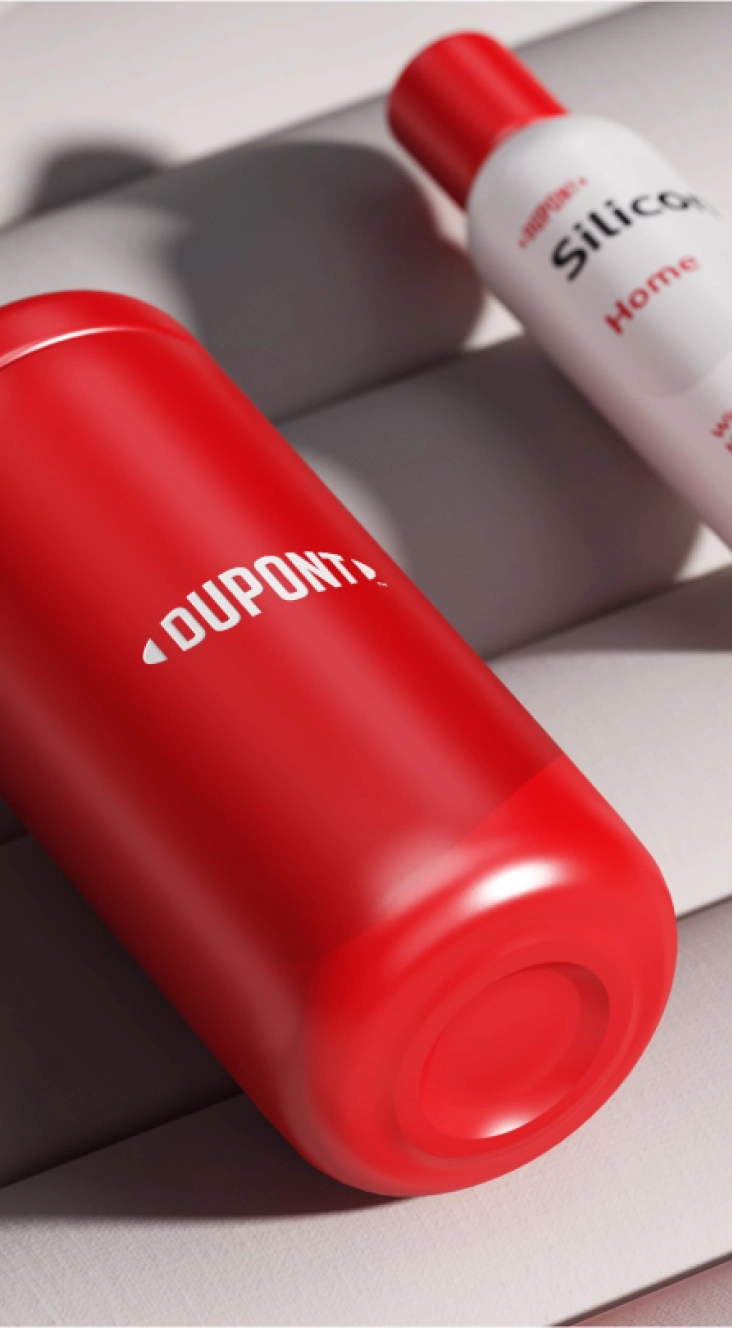Webinar Rewind: Episode 3
In 2025, brand change is under a microscope. High-profile evolutions are sparking praise—and critique—in equal measure. But brand transformation is more than surface-level updates; it’s about leading change that aligns with evolving business strategies driven by customer expectations, disruptive technologies, and competitive forces.
With 80% of CEOs expecting marketing to drive growth, the pressure is on to deliver more than just compelling campaigns. In this webinar, we explore how marketers can maximize growth and minimize risk with brand activation. Highlights include:
- Anchor in business outcomes: Anchor your brand agenda in the burning platform and the metrics that matter most to your business
- Think across the full spectrum: Consider every level – from story and design to experiences, products and people – as ways to brands can create value
- Identify your priority pivots: Zero in on the brand moves that will deliver the greatest impact for stakeholders and the business
- Launch smart to build momentum: Sequence your activation to reach the right audiences at the right time, fueling confidence and sustained progress
Laura Schultz: Hi, everyone! Welcome to Lippincott's latest episode in our 2025 webinar series. We're going to be touching on brand activation. If you have questions throughout the episode, you can drop them in the Q&A box, and then we'll address them at the end. But for now, I'll turn it over to our esteemed hosts, Shelby and Emily.
Shelby Hawker: Hi, good morning, good afternoon, good evening, depending on where you're joining from. I'm Shelby, a senior partner at Lippincott. I lead broad-scale brand transformation assignments across different clients in different industries and geographies, and I also happen to lead our activation capabilities, so very excited to talk about this work with you.
Emily Guillmette: Lovely to meet everyone virtually. I'm Emily, Shelby's partner in crime in activation, and love to help brands figure out how they really come to life across a range of applications and ways that drive the business. So, also excited to talk to all of you about it here today.
Shelby: For folks who aren't as familiar with Lippincott, we'll start with just a tiny primer on who we are. We’re a global brand experience and marketing consulting firm. We've been in business for a little over 80 years, really founded the concept of corporate identity and have been transforming brands at a corporate level and a product level, et cetera, across the world for all of our time in business. As our capabilities have grown, the way that we transform and bring brands to life has changed considerably, from really focusing on that Betty Crocker spoon back in 1943 to the truly dynamic and broad-reaching ways that we think about how to bring brands to life for the likes of Walmart, Starbucks, and Google today.
Complementing that broad remit that we have today, we have a very holistic toolkit of capabilities as a business as well, across brand experience and marketing. As we think about brand activation, you'll notice that we'll be touching on elements from each of these three areas, where we really think about how everything can come together in service of the brand and the business goals that the brand is meant to help drive.
Today we'll be talking a whole lot about brand activation, and I'm looking forward to having a think with everybody here around what it means to activate a brand. Traditionally, in the context of a brand transformation, a new positioning, a change in portfolio, a new logo, or name, or visual system, one might think about brand activation as that moment of launch. I would love to think about it from a broader context in terms of how we build a transformation agenda so that it’s something that can truly deliver for the business year after year, and how to think about setting a brand activation mindset that can enable that enduring commitment to bringing the brand and business forward. Then we'll spend some time in Q&A, so looking forward to hearing from you. As you have thoughts and questions, please go ahead and add them to the Q&A as we go, and we'll look forward to addressing things as they come up at the end.
We're gonna have a few polls throughout this, want to make it as interactive as possible, so you should have a little pop-up coming up on your screen. Just to set the stage a little bit, in a few words, what does brand activation mean to you? If you could spend just a moment to answer that question. It's not a quiz where there's a right or wrong answer, but maybe, as such things are. We'll look forward to your thoughts.
I think we give maybe a minute or two for folks to respond on this.
As you're answering these questions, we know we've got clients on, and folks from all kinds of industries and so forth, but we also have some agency partners on. If you happen to be from an agency partner, maybe think about a key client that you're working with as you answer some of these questions today.
Okay, let's see… And this will be one that we won’t be able to display on screen, but curious if Laura and Bridget have some thoughts on some words that are coming through. So the notion of bringing the brand to life. Absolutely a key component of brand activation. Doing so through experiences that engage people and build lasting connections. Yeah, absolutely. The way that you're engaging with all of your audiences and your own people is a huge part of activation. What else are you seeing, Emily?
Emily: I love this idea of making sure messaging and you have consistency that helps things grow together, which is a really important thing that we're going to be talking about. Getting things out there and seen and heard. The idea of really delivering on the promise is coming up, which is great. I think this group is a sophisticated audience when it comes to brand activation. Love this idea, too. It's not just concept, it's moving from concept to reality. Love that.
Shelby: Yep, yep, making the brand real for customers and employees, absolutely, so many ways that we do that. Well, great.
So… I think many of us in this conversation are marketers, and I think we all have an instinctive understanding that strong brands are a huge part of how a business succeeds through work that we've done in measuring the strength of brands. We know that those go-to brands that can deliver on all of the right experiences create a five times faster growth rate than those of their peers. Strong brands are huge drivers of loyalty, enable market expansion, really help you attract talent. There are so many major benefits of building those strong brands. And it's not just marketers that know this. The CEOs are increasingly looking to their CMOs to handle the breadth of the company's growth agenda, which is both wonderful and probably terrifying, right? Where so much is on the shoulders of the CMO and the marketing team, recognizing that the strength of the brand and the growth of the brand often extends beyond the immediate remit of the marketing team as well. So, how do you think about using brand and otherwise to really help your peers see how things need to come to life differently is a key part of this as well.
So, when we think about brand transformations, it's a major move to make to reposition, or have a new name, or new logo, or undergo these changes. Typically, making those bigger moves is not so much about just not being stale and having a nice little refresh. But it's really about addressing major business transformations that you're trying to pull off, whether it's about market shifts, new competitive pressures, if you have dramatic changes in your capabilities, or in an M&A sort of situation. These are those moments when you go through a broader brand transformation exercise, typically.
These experiences are not small. They take a great amount of budget and resources and time and absolutely political capital within your organization to pull off those kinds of brand transformations, and that's a big part of why just declaring victory with that new strategy and having a compelling launch and a checklist of touchpoints to flip over to the new brand is not really enough. As we think about brand activation, it really becomes a broader exercise in thinking about how to move things forward for the business. So, when we think about Brand and brand activation, there's a tendency initially to think about defining the brand as your brand positioning strategy, your brand platform. What's that brand idea? That's what the brand is, or your logo and your name. But it's really how it comes to life in the experience for your customers, your employees, all of your major stakeholders. Brand really lives in the perceptions and experiences of others, of how it's received in the world. Therefore, brand activation really has to be that fulcrum that makes it brand tangible to enable that business impact to drive things forward.
That's a lot to pull off, right? And that means that as we've thought about what it means to activate a brand, I think traditionally, we would think of brand activation as the next step after doing the foundational work, a list of activities to accomplish, a launch that allows us to declare victory and success, something that's really just owned by marketing and accomplished through a campaign, an event, or a set of better experiences that sort of show that we've done something and moved something forward. Encourage everyone to really think about brand activation as something that you're planning from the start, that it's really about a set of prioritized outcomes for what you're trying to achieve beyond that list of activities. That it's not just about launching in a moment, but really creating and building and sustaining that momentum over time. Something that's not just on the shoulders of marketing, thank goodness, but shared by everyone, which is also creates complexity and requires really bringing people along and going from something that's about having a few pops of new things happening to really creating those branded experiences that move the needle on your brand and business objectives.
As we think about this, that's a lot of things, and that's a lot to pull off. The key to really making it happen in the context of limited team, limited resources, limited budgets, and a need to really prioritize to move things forward, the opportunity really is to focus. So, as we think about brand activation thematically, it's not just about doing a lot of things, it's about really doing the right things, creating those priorities and driving them through the business.
In that context, a poll… this one's a little easier, it's a closed-ended one, so you can choose an option, but curious to hear from folks what your biggest challenge is in activating your brand today.
We'll give folks a minute or two. Emily, what's one that's popping for you?
Emily: In my experience, I think… what we've seen, for me, what I see a lot is a couple of things. Budget is a factor for people, especially looking ahead to this year. How do you make the most of resources that you have? ROI uncertainty comes up in that context, too. Like, how do I make sure people understand we're gonna get something out of investing in this way? And then, the other thing that can be challenging for clients I've worked with is especially in a challenging macro environment, sales and product marketing and that need to have demand going hard and strong and having that be the focus comes up a lot. Shelby, if those are the things that come up for you, too.
Shelby: Yeah, I think, you know, it's, like, how do you pick the biggest challenge among all of these challenges? It's tricky, and I think, you know, with different clients, some of these can feel almost insurmountable, so I'm curious to see what people are thinking.
Let's see… so… and a pretty good distribution here. So, interesting that the highest number are in this idea of being too siloed across the organization, so the notion that something is in place, and operationally, or in terms of culture, or product, or otherwise, that are not enabling that brand to fully come to life. That's really interesting. And then a close second around budget. Always a constraint, always a really key thing, and that's where just that notion of prioritizing around a few things, and ideally a few things that are already happening in some form where the brand can help to focus and provide direction for them. Cool. Anything else, Emily, that you're seeing in the data?
Emily: I think all of that stuff feels really important. I think this idea of being siloed as an organization is one of the reasons why we want to talk about what a brand transformation agenda could do versus a typical launch plan, because clearly, you guys can't do this stuff alone. You need to make sure the full organization is pulling in one direction together.
Shelby: Well, that's a great idea. Emily, why don't you tell us how we create a brand transformation agenda?
Emily: So, this is how we focus and how we pull the organization together. Think about a brand transformation agenda as a to-do list with its strategic and activation hat really dialed on and up. What do we think about when we think about building a brand transformation agenda? We want to make sure that it is anchored, first and foremost, in the business needs, all of which Shelby talked about, the whole reason you started to transform brand in the first place. Make sure it's anchored in that, and make sure it's anchored in your brand strategy. You probably put a lot of time and effort into putting it on paper. It has to anchor there.
You're going to consider the full spectrum of ways brands come to life. So, as marketers, it's easy for us to think about comms, but there is product, and there is experience, and there's even culture and operations that come to bear. Then, once you've thought broadly, you want to start to narrow in, making sure you know what's going to make the biggest difference for you, and pivoting in that particular space. That's identifying your priority pivot. And then, of course, you're going to launch smart. You want to use that launch to create ongoing momentum for yourself. Break each of these down a bit so we can give you more of a sense of how to use them.
Anchoring in business needs. It's easy to think about this when you're developing a new brand strategy, but sometimes when you get into the launch of that strategy and the activation, it gets put to the side, and you really want to make sure this is part of that thinking about the ultimate outcomes you want to drive, as Shelby said. For example, if you are driving growth, and you have a range of new capabilities, and the measure of success is increased customer lifetime value, you want to make sure that the transformation and the activation you're putting in place is really going to help increase customer lifetime value. So keep that at the forefront.
The other thing that you want to keep at the forefront, and it can be easy to lose this too, especially when you are getting past launch and you're thinking about ongoing momentum, is that brand strategy that you put in place, and you really fussed over every word, and you made it really perfect, and you've gotten there. It's sometimes easy for the organization to lose this, especially over time, but this has to be at the fore. This is the strategy you set, and what you're trying to stand for, and what you really want to own. We want to make sure people see this, know what to do with it, and as a bunch of you said, know how to really bring it to life across all of the applications that they own.
Number two, full spectrum of ways brand comes to life, and what is that spectrum? We've put this into six buckets, or six things that you can really think about. Brand comes to life in the audiences and partners that you prioritize. We can all spend a lot of time thinking about brand as connecting us to our customers, but it helps us with investors, it helps us with analysts, it helps us with decision makers all across different parts of businesses. It helps us with our recruits and the people that we want to bring into the organization. So, we really want to make sure we know who has to understand who we are and what they think about us.
Visual and verbal expression of the brand, critical way it comes to life. Is your visual expression conveying who you want to be? Is your tone of voice doing the same thing? You may have some of those pieces in place, but maybe not all of them, and as you all said, making sure the organization understands it and is using it, you might not have all of the training or tools you need to help people use them with consistency.
The story you tell, the marketing that you have in the market, the places you're showing up, sometimes we can be very focused on ads when, for our B2B clients, trade shows, industry publications, those are key ways that people understand who we are, making sure you're really good at the story you're telling and where you're telling it.
Then, going beyond our marketing remit to the experiences that you create for audiences, online and off, how are you engaging them? What is the sales process like? What is the onboarding process like? All of the ways that they experience who we are, really feel it.
Products, services, and innovations, the things that you offer them, the things that they're buying, that says all about who we are and what we stand for. We want to make sure that's working for us.
Then employee behavior is the culture you have, and even the operations that enable change, that's a key way brand comes to life, too. If your employee base doesn't believe in energy and happiness, if that's your brand, that's gonna be a challenge. People aren't gonna feel it. If you are promising simplicity, and that's what your brand is all about, and your operations are complex, that's not gonna let you move forward either. So it's important to think about those pieces of the puzzle, too.
Once you've thought broadly, then you have to prioritize. So if we think about those six buckets, those six ways brand can come to life, you really want to start thinking about what's going to be most meaningful, what you're really going to need to pivot to make sure that you're making brand progress and business progress. Understanding where the biggest gaps are between your vision and today's reality. So maybe you are trying to look like an enterprise-serving organization, but the design system isn't getting you there yet. That's a gap you need to identify.
Making sure you understand what moves the needle most. What are the moments that really matter for engaging the people that you have to engage? Maybe it's that where you're telling the story, as I said. Maybe it's a signature offering, and that's the thing that really helps people understand who you are and what you're all about, and it doesn't matter how much you advertise, they're gonna care about that signature offering. What moves the needle most is a key thing to consider.
Then finally, you need to bring some of your organizational realities to bear. As you all said, people are fragmented, bringing them along, you need to be clear about if we are needing experience to shift, but we don't have as much control over that, how much can we ask that organization to take on? What is something that we could prioritize now? What might be a longer-term build-out that we'll need to really think about as a longer-term application or a longer-term activation versus something that we can really think as low-hanging fruit now.
I wanted to give you some examples of organizations who've used that kind of prioritization thinking to help focus their activation. Shelby and I will talk about a couple of these. Morgan Stanley is a great example of an organization that focused on shifting and pivoting the audiences that they were targeting. From a business perspective, they were all about expanding the audiences that they brought in the door. They'd focused on ultra-high net worth for a long time. They were very industry-insider-trade focused. From a business perspective, they shifted. They bought E-Trade. From a brand strategy perspective, they shifted, and they started to think about the power of bringing together different capabilities and collaboration. From an activation perspective, that meant that they did a lot of things that were targeting audiences they hadn't thought about in the past. So, making sure that they had a broader consumer base they were talking to, versus just focusing on trade organizations. They had a big brand campaign. They hadn't done that in a long time because they hadn't really thought about focusing on a broader set of consumers who needed to understand who they were. So that was a real audience pivot they made.
PBS is a great example of an expression pivot. A couple of years ago, they were really thinking about how they were going to survive and thrive in the new digital watching environment we all live in. For them, they had a brand strategy that was about showing up as the thoughtful, thought-provoking organization they'd always been, but for everyone and everywhere they needed them to be. They really used expression tools, like a signature color that they hadn't in the past, and some really fresh design to make sure that there was a consistent, recognizable through-line, whether you were accessing them on your Apple TV, or whether you were accessing them on YouTube, wherever you would find them, they wanted to be visibly very present, and that was a key pivot they made.
Nucor is a great example of a story pivot. Nucor, Steel Company, Commodity space, they had a special secret sauce. They had a great way of manufacturing steel in a way that was greener and cleaner, but they hadn't told that story, so they made their brand strategy all about made for good, and then they really told that story. They used campaigns, which they hadn't done in a long time, they used content, they used social, they really used that message to make a pivot in the story they told, and ultimately a pivot in how they were seen as something beyond a commodity business. I think Shelby's got great insights into the bottom three that we have here.
Shelby: Sure. So, Swarovski's a really good example of a brand activation pivot that was very much rooted in experience. Swarovski was, you know, started out as a really great premium luxury sort of brand, and had kind of lost some of its swagger. It was beginning to be seen as cheap crystals for old ladies, and so the brand strategy was really about bringing it back to life and making crystal cool again, and a key pivot was really reshaping the experience from something of, you know, sort of a discount kind of perception in retail and in packaging to really creating that wow factor of a feeling of being in a jewel box as you walk into that retail experience, or really opening, something with a great deal of reveal, when it comes to the packaging. So that was a big part of creating that experience pivot for the brand.
The Xfinity brand is actually a really great example of a product pivot. In a time when Comcast was perceived as old cable, old technology. There was a real opportunity to reestablish its entertainment and technology credentials. You couldn't just do it through a new brand that was meant to represent those things. The pivot to really bringing it to life successfully was having the product experience that fully backed it up. Delivering on that promise with exponentially faster internet speeds, exponentially more content in a TV experience, all things that you're going to feel the difference as you're experiencing it, but might not really quite get it or see it without that complement with the brand. So, making sure that the brand and the product were totally working together. So that's a good product, you know, based brand transformation, example.
Citi, is, I think, a good, in the banking industry, a good example of a major transformation that's rooted in culture. With over 200,000 employees globally under this idea of a brand idea rooted in enabling growth and progress, the pivot for Citi was really in bringing together a unified culture, so no matter where you were as an employee, you were going to experience growth and progress as an employee, so delivered through the brand experience for you just as much as you were expected to deliver that same brand experience, externally for your clients and customers. Lots of ongoing work there to create that branded culture, through different kinds of programs and experiences for employees, including, what's captured here is the CEO-sponsored Progress Awards, which is an innovation competition that's really about reinforcing those brand commitments and creating that brand culture. Different brands, different ways of really prioritizing what are those key pivots to invest in and focus on and bring to life in creating that ongoing activation and transformation.
Emily: Not having to do everything at once gave them some real freedom to make sure that they were doing the job that they took on really well. The final piece of the puzzle in having a good brand transformation agenda is, of course, the launch. I have had client executive teams who've said to their poor brand and marketing lead. Can't this just happen by osmosis? Can't people just will start to use it, and they'll get it? That is never a way to make as much progress as you want. But you can launch smart and you have to think about doing it with momentum in mind. Who are the right audiences? Who needs to know about the changes that you're making in business and brand? Making sure there's a really strong why for those audiences. Why does it matter for them? Why does it matter for the business? This is really critical. If you don't have a strong story about why, if you just change a logo, or you suddenly look different, or a product that people love went away without a story about it, that's where we get in trouble, and we've actually seen some brand activations in the market that have been a little tricky recently because they didn't have that strong why behind them.
The right volume is important to think about. I think when we all think about launches, we can think about a big moment, and there's a huge press release, and everybody's in a room, and confetti falls from the ceiling, and ta-da, the new brand is unveiled. But that's not always the right tactic. I've worked with clients where they really needed to pivot their internal culture so that they could deliver a better external experience, and they didn't want to talk about brand with their external audiences until they'd gotten everybody internally on board and they were actually functioning in the way that they needed to. So their launch was very quiet from an external perspective, but really loud from an internal perspective.
The right timing, picking your moments, using a moment that's going to get you the right interest that you need, and then, of course, the right tactics. What are you going to do to educate people internally? How are you going to empower them? What are you going to do to tell the story externally? How are you going to make sure you've got the right cadence of changing materials if you're making a big design change without overdoing it from a financial perspective. You don't want to suddenly throw out every brochure you've ever made ahead of time if you don't have to. So being really smart about the launch that you create.
Putting this all together has real benefits. There is clear ROI that you can talk about with the rest of your management team about what investing in brand is going to get them. You'll have a clearer sense of where we're trying to go, what their role is, what we're ultimately going to achieve for the business. It means that your impact can be more meaningful versus superficial. It's going to be about really shifting behaviors, or even product, or even experience, the things that are most meaningful for making progress. You'll be tackling those. It's execution that builds momentum. You'll have an agenda that is more comprehensive than just marketing alone. It's a way of bringing everybody together around the job that needs to be done, and what it's going to take over time to do it. Then, of course, it's about opportunities fully realized, knowing that you've looked at all of the things that could ultimately impact brand and business success, and you've brought the right ones to bear. So you're not going to leave anything on the table.
Shelby: Great, so a lot of different thinking that we've thrown at you in terms of different ways of thinking about the pivots that might yield the biggest results for your brand and business. Another poll question coming up here, what do you see as sort of the pivot area that might have the biggest impact for your brand, so take a look at the options here. I think it's a just pick one. Unfortunately, again, it's that notion of focus, but usually in a brand transformation agenda, there are two or three of these at play in a strong way.
We'll give folks a moment to think about which one, if you had to pick?
We've got Bridget monitoring in the background to see as people are responding when to close the poll. Looks like she's closed her. Okay, let's see. Wow, interesting. Two really spiking here, I think. Let me scroll down, yes. The experience that you create for audiences online and off, absolutely huge. The way that we're experiencing brands today has shifted dramatically over the last 10 years, 20 years, and is in the middle of another monumental shift in the age of AI, so a huge part of what we're spending time thinking about on behalf of clients and brands as well. Then employee behaviors and operations that enable change, so really making sure that the people and culture are behind it so that you can really bring things forward as an entire organization. Super interesting.
Emily: I'll just say, I love seeing that experience focus that everyone has. If you wonder what we do for fun at Lippincott, we had a happy hour moment as a team the other day where we were talking about big shifts from AEO and we were really talking about the criticality of experience in this moment, as Shelby said, making sure that the brand story you're telling is very consistent, that it shows up in the experiences you're delivering, so the people who experience them can tell that story, too, and create this virtuous cycle that really helps you have meaning in this new AI-enabled search space. Glad that everybody is on that same page, and if you haven't watched our prior webinars, I think our colleague Tom has a great one that talks a little bit about that, too.
Shelby: Okay? And so we're nearing the end of our canned presentation here today, and looking forward to your thoughts, so keep populating that Q&A, but, just to wrap up a little bit on this, the wonderful and the terrible of this is that brand activation truly is never done. It's not a moment in time. It's not a single thing that happens, and then you get to rest. Unfortunately, we never really get to rest, because on the next page, activation is really an ongoing mindset to apply every day, across the business, across how you're delivering for your customers and for your people.
A few reminders of things that we've talked about on the next page. Just making sure that as you're approaching brand activation and thinking about how to really make the brand tangible for your customers and for your people, you want to make sure that you're first absolutely anchoring in the business outcomes that you're trying to solve. These are big undertakings, and they really have to be in service of how you're trying to move the business forward. Your brand strategy should absolutely be an expression of your business strategy, and therefore, your brand activation needs to be anchored in the outcomes that you're trying to achieve as an organization. Gotta think about the full spectrum, so if you're being asked to unlock growth for the whole organization, you need to have the whole organization behind you, and think about all of those potential pivots and levers that you need to make sure that you're realizing those brand and business ambitions. So you gotta identify those priority pivots and, and then, you know, brand activation, we sort of started out by saying it's not just about launch, but I tell you what, launch is also very important. It's a really critical moment in time to build that momentum and set the stage for the breadth of your activation agenda. So, really important to do that, too.
In summary, in a world where the pressures are non-stop, and you're being asked to do more, more, more all the time, asking more of your teammates, the nice thing is, there's an opportunity to succeed more by doing less. Activation ultimately isn't just doing a whole bunch of things on a checklist, it's really about choosing the right things and bringing the whole organization behind you to move the business forward. So that's our take on brand activation, broadly. Let's give a few minutes for folks to further populate questions in the Q&A. We've got some time left on our hour. Let's see, I see a question coming through from… Already? Is it ever too late for the activation agenda? Maybe there was a brand that launched 9 months ago with an inexperienced team, and there's an opportunity to do more. Absolutely never too late. This is really about thinking about where the opportunity lies to make the brand real, and to bring it to life in a compelling way. There's always a chance to create new momentum, make a difference, move things forward, whether you're talking about how you're communicating and telling your story, whether you're talking about the experiences that you're building, the products that you're bringing to market and how you promote them, or the culture that's really gotta be backing the brand. Never too late.
Emily: See a question, too, about volume. How long should you stay loud post-launch or pre-launch? How much should you be explaining the why? How does that play out? That's such a great question. I think it really depends on what you're trying to achieve overall, you know, how loud do you need to be? But one thing, especially if you're making a big change, let's say you've done a name change, or there's a really big shift in the business, it does take additional investment, in your marketing to really make sure that that comes through, so if you've got an executive team who's asking about how long you should be loud, you're gonna say to them, if we're doing this, we have to invest in it, and we've got to be out in the market talking about it for a moment, for those bigger changes. Pre-launch explaining the why, that depends a little bit, too. I would say, maybe, you know, a day is not enough. You want to have a bit of explainer as you're going, and you want to build that explanation into everything that you're doing as you're going along. A good launch tip for communications is think about your insiders first. Like, if you were making a big change in your personal life, and you're close to your mom, and you forgot to tell her until after you've told all your friends, she might be a little bit upset, so thinking about that cadence of who are we closest to, our employees, and then our great, loyal customers, and then our partners, and our investors. Thinking about that cadence of communications around the why is really helpful.
Shelby: Great. Another question here, sort of timely in this moment, but we won't name brand names in this. We're seeing brands pivot for solid, reasonable reasons, and then get decimated in the media. What are they missing in their activation approach? I think this has been something that seems to have hit sort of a fever pitch this year, and I think it's an excellent example of why a thoughtful activation approach is absolutely warranted, because if you just change the logo, change the name, evolve the name, and put it out there without the broader story of the why without thinking about what are those key pivots that are making the difference and bringing it along, and having that launch story that really helps to explain at the right volume why, at this moment in time, we're doing this. Bringing your different audiences along so that you're thinking not just about your audiences of the future, but your legacy audiences that need to come along with you, and making sure that everybody feels like they're part of that journey together. All really important, both in the context of the launch, and then thinking about how you're building that momentum around the pivots so that a brand change feels like something that's happening very naturally as part of the broader business transformation that it's accompanying.
Emily: I'm seeing a digital optimization question, and we have a whole team who are much more expert in this than Shelby and I are, but the quick answer to that is there are a lot of things you can do. I know that there are things marketing teams can think about that are using AI tools to make their jobs easier. Can you use it to make sure that the messaging you're pushing out is hyper-tailored and totally in line with brand? But when it comes to making sure that you are doing things that will help you show up in an AI-driven, AI search-enabled world. A lot of it comes down to clarity of story that you tell that is then retold by the people who care about you, so you want to make sure what people are saying in Reddit, because they've had a great experience with you, is what you're saying about yourself, too. So it really comes down to focus. I think there have been times in the past where brand flexibility and changing with the moment has been really necessary. This is actually a time where we all have to refocus. Tight story, delivered through the experience that people understand and can repeat back.
Shelby: Yeah. Another good question that we hear a lot, so great to see it here, is. When you're only able to prioritize certain areas for brand transformation and activation, do you see there being a negative impact of consumers seeing the old brand and the new brand in the market at the same time? So, if you're prioritizing other things rather than a light switch, level flip of the brand to the new brand. Is that problematic? I think increasingly, the answer is no. Consumers and all of us in the broader marketplace are at this point pretty accustomed to brands going through evolutions and seeing some of the old and the new at the same time is something that folks have gotten pretty used to, and we know that some of those touchpoints, like corporate and retail signage can be, you know, can be among the most expensive and not necessarily the most impactful. Right out of the gates. So what we find is that, even this is part of thinking about brand activation from the start is thinking about the bigger the change that you're making in the brand, probably the more anxious people are going to be to see that new brand realized more quickly. So as you're thinking about your appetite for brand investment, for brand transformation, even thinking about it at the time when you're contemplating what level of evolution you need to go through can be appropriate. Then otherwise, really making sure that you're talking about that activation and the transformation of the brand as a journey, rather than a moment in time, thinking about the brand that you're becoming and the promise that you're living up to. That can be reassuring in the context of creating a brand strategy that probably has some aspirational qualities to it, some aspects that you're already delivering on credibly as a business, but some things that you're building and leaning towards, so being able to make that part of your broader brand transformation story can be compelling.
But it's often, like, a great problem to have if people are really eager for seeing that new brand in new places. We often find with clients that don't necessarily own all of their touchpoints, so PBS was a good example of this, where the stations have their own logos and identities and own, that are fully owned by them. Once we helped them to transform that PBS brand expression, we found that the stations were, we had a pretty limited goal of how many would be converting over and investing their money to do so, and we radically exceeded those ambitions, because the new brand was something that was so desirable and so business-moving for them that it was really worth making that investment at that time. Resources are even more constrained now, but it was a really important and appropriate move at that time.
Emily: Question 6-1, close to our hearts. Since brand activation is never done, should brand governance be always on, integrating and engaging across teams to support brand-aligned experiences? I think Shelby and I would say, yes, we always say that no one on a marketing team likes to be the brand police, and governance doesn't have to be brand police, but being a source of education, resources, support for the rest of the organization to help make them more successful, that's always welcome. Setting yourself up as having that ability to be part of the team pushing things forward, and I think this kind of activation, thinking can help you do that in great ways. So, yes, yes to always on.
Shelby: Let's see, another question. Any operational practices you've seen from highly successful client teams in terms of orchestrating brand experiences across touchpoints cross-functionally. Operational practice and ran experience at CrossFit. You know, I think it depends so much on the organization here in terms of how much is centralized and how much is more distributed in terms of the ownership of some of those operational touchpoints and things. I think that, you know, this is where that notion of really creating focus around a set of priorities, and then engaging the leadership team, not just the marketing team in and really being responsible for producing those results together. So, making sure that everybody is really bought in on those particular operational priorities, understand what the outcomes would be in terms of the lift for the brand and the lift for the business, and then using that momentum to come together and make them happen. Anything else you'd add on that operational point, Emily?
Emily: Another thing is the start from the beginning piece of this. I think the more if you're undertaking a brand transformation, the more people who have roles outside of marketing that are involved from the beginning, the easier it is to put operational practices in place. Down the line to help deliver against those things. We did some work recently with a large energy organization who really needed to shift things like the app experience, and how teams in the field were going to engage with customers, and as Shelby said, lots of different teams owned pieces of those things, but everybody was part of a brand-building process from the beginning. They all saw the same data about why things were important. They all saw the same data about why doing certain things would move the needle, and that has helped them come together and a range of work teams, more integrated work teams, to address some of those things, so lots of different ways to do it, but I think it comes down to putting more different people in the room together than you typically would for a brand or marketing initiative, and making sure that they understand the goals and why they're important, and that helps people moving forward. Might not be the most satisfying answer, but it's helpful to think about that.
Shelby: Yeah, and we'll take one last question here, coming through as what's one of the most underappreciated activation tools for bringing a brand to life, and I think I'm going to cheat on this one by kind of claiming a full pivot area, but I think the employees are probably the most powerful here, so once you can really motivate them, help them see themselves in the brand, understand what it means to deliver, not in terms of, like, very specific expectations, but in terms of an overall buy-in to the brand experience that you're trying to create externally. That'll mean that you don't have to do all of the work yourself, that each employee within their given responsibility has an ownership of the brand, an ability to help to deliver it externally as well.
Emily: And I'll add plus, plus one and add to Shelby's point, thinking about all of your agency partners in the same way can be really helpful, too. We did a project where there were lots of agencies doing lots of different things for lots of different parts of the business, and at the beginning of a brand change project, everybody got together and talked about it. At key milestones in that project, everybody got back together, and then there's an ongoing cadence of meetings with every agency partner, so even if a sneaky product team is like, let's just do this off to the side and forget about the brand, that agency, at least, has been through a brand training, knows what is trying to be achieved, and can help be part of helping bring it to life, whether it's a campaign, or whether it's a sponsorship, or something they're working on, everybody on the same page really helps.
Shelby: So, thank you all so much for joining. We know that that was probably a lot, but also sort of high level, as a conversation like this must be. If you have more questions or specific questions about something happening with your brand or something that you're trying to activate in the marketplace, please do reach out to me or Emily or really anyone within Lippincott, and we'd be delighted to help you think through it. But good luck activating out there every single day. It's daunting, but it's part of what we must all do.
Emily: And thank you for your emojis and your thumbs up and your claps, it's really heartwarming to see all of that. Thank you all so much.
Laura: Thanks, everyone! Recording will be available post after this episode, but thank you so much for joining.











